Let’s finally answer the question that has plagued philosophers for centuries, in the light of modern music production technology.
Music producers can be a little superstitious. In the recording, mixing and mastering domains, myths and legends tend to persist, and conventional wisdom has a grip that doesn’t always get re-evaluated when technology changes.
For example, one piece of production advice that still gets repeated is to “high-pass everything”. In a world where music was recorded and then cut to vinyl, this was solid advice, stopping low frequencies from building up, and preventing needles from skipping out of the groove. Today, this advice may still apply in some cases, but high-passing every track can cut more signal than noise, and cause phase issues to boot. Times have changed.

Our focus here, though, is the idea that bass frequencies aren’t fit for reverb. Putting reverb on bass and sub bass frequencies is not exactly a hard line in music production, but it’s generally advised against. In this article, we’ll evaluate the subject based on today’s technologies.
This advice is found at a nexus between a few production problems – there are a number of reasons that reverbs are high-passed by habit.
Phase cancellation is one of the things most likely to go wrong here. As multiple repeats of a signal build up, cancellations will occur at different points in the frequency spectrum, and bass frequencies – which we aim to leave solid, strong and powerful – are particularly vulnerable to these.
Another problem likely deterring the use of reverb is its effect on the stereo field at low frequencies. Reverb is often stereo, while bass frequencies are almost always kept mono. Adding bass frequencies through reverb will create extra low-end information whose stereo image is more spread out and inconsistently placed within the stereo panorama – not exactly a firmly rooted foundation. We can collapse a reverbed signal to mono, but this can lead to phase cancellation (see above).
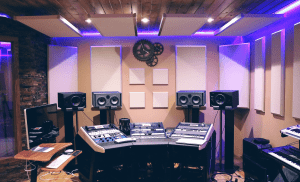
Another reason to avoid putting reverb on bass is simply to make mixing easier. Getting a clear and powerful bass range is one hallmark of a great mix, and low-frequency tasks like mixing kick and bass can distinguish a professional mix from an amateur one. Applying reverb, which extends the effective length of kicks, bass notes and any other low-frequency information, can only make this harder.
Reverb acts to give sounds a sense of space, and in doing so, it can lend a feeling of realism, depth, and even drama.
One good example of reverb working well on bass frequencies is in the orchestra. The impact of low orchestral instruments like timpani, double bass and tuba are all heightened by reverb – which comes as standard in a concert hall. Similarly, no one is calling to remove reverb from the bass-heavy braaams and sub drops of movie soundtracks – it increases their effect on the audience.
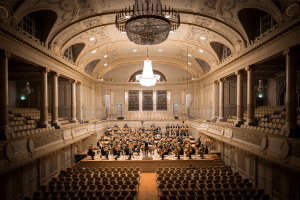
Kick drums are an interesting case when it comes to reverb. Their sound stems from a low-frequency ‘note’ that falls as the drum membrane comes to a rest after being struck. This is even more clear-cut in synthesized or layered kick drums. By adding reverb to this falling note, its sound is smeared. This can be a good or a bad thing, depending on context: you may lose clarity, but the sound will end up thicker and more complex.
Put another way, bass frequencies are more able to mask other frequencies, and bassy reverb can only accentuate that problem. As we said in our article on EQing Reverb, there’s a reason that bass duets are rare in the history of music.
So far, we’ve seen that there are genuine reasons to be wary of reverb when applied to bass frequencies. Most reverb plug-ins, including our own smart:reverb, contain high-pass filters to remove the sound of the lowest frequencies from the reverb signal. If in doubt, it’s possible to play it safe.
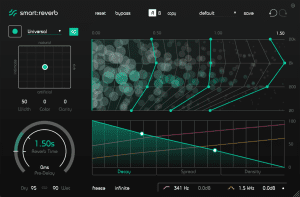
But instead of avoiding reverb altogether, we can also take action to limit the negative effects it can have, hopefully leaving all of the positives in your signal.
Older reverb units had their way of handling reverb in bass frequencies. Classic Lexicon units offered separate reverb times for bass and above, giving users the chance to set the crossover frequency and a multiplier for everything below it. This feature persists in some of today’s popular reverb plugins.
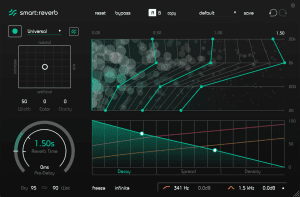
Why would you do this? A reverberant space will have a frequency response of its own, with peaks and troughs at different points based on the dimensions of the space – otherwise known as Room Modes, which are especially apparent in bass frequencies.
Every instrument or sound has its own resonant frequencies, and when these coincide with a room mode peak, the effect is increased. It’s actually one of the key principles behind our plugin smart:reverb to create a reverb space where modes are no issue for your particular audio signal.
One of the most common acoustic problems concerns bass frequencies. We mentioned room modes above, and that they can play havoc with the relative levels of different frequencies – especially bass frequencies – when present in a room. As well as the recording room, another critical room used during music production is the control room or the studio itself: the place where mixing and mastering takes place and where a good monitoring setup is crucial.
The environment where music is mixed can easily have an effect on how things sound, and therefore what mixing decisions are made. If the monitoring environment has issues with room modes or low-frequency decay times, this will make bass reverb sound stronger in the environment than it actually is in the signal. This is one reason to take precaution with how much reverb is present on bass frequencies – especially in a less-than-ideal studio.

Still on the subject of playback systems, where will the music be played once exported and distributed? Headphones are generally well-controlled systems, if a little resonant and unreliable for bass; you can’t make changes to the room an average listener will be listening in; and most importantly, if your work is destined to be played live, especially in a large space, this can create more reverb concerns.
Playing a track in a club or other large, loud venue can be something of a reverb nightmare. In large spaces, bass frequencies are very easily supported, and particularly resonant. At these venues, any extra reverb on bass frequencies could easily be joined by the reverb of the environment, which of course will change at different locations. Music played in nightclubs is usually intended to have a tight and focused bass response, so any extra reverb lathered on during the mix may be unwelcome here.
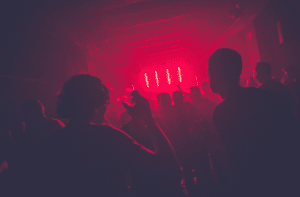
If your music is likely going to be played in daily environments such as headphones and small rooms, reverb seems like a safer option to add during the mixing stage; if it’s destined for the Main Room or an abandoned warehouse, it may be best to show some reverb restraint.
We’ve covered a lot of ground in this article. There are genuine reasons to stay careful when applying reverb that extends to bass frequencies, but at the same time, when the conditions are right and reverb is successfully applied, it can heighten the effect of your music.
Want that in simpler terms? If it sounds good, do it. But check your phase cancellation and stereo image.
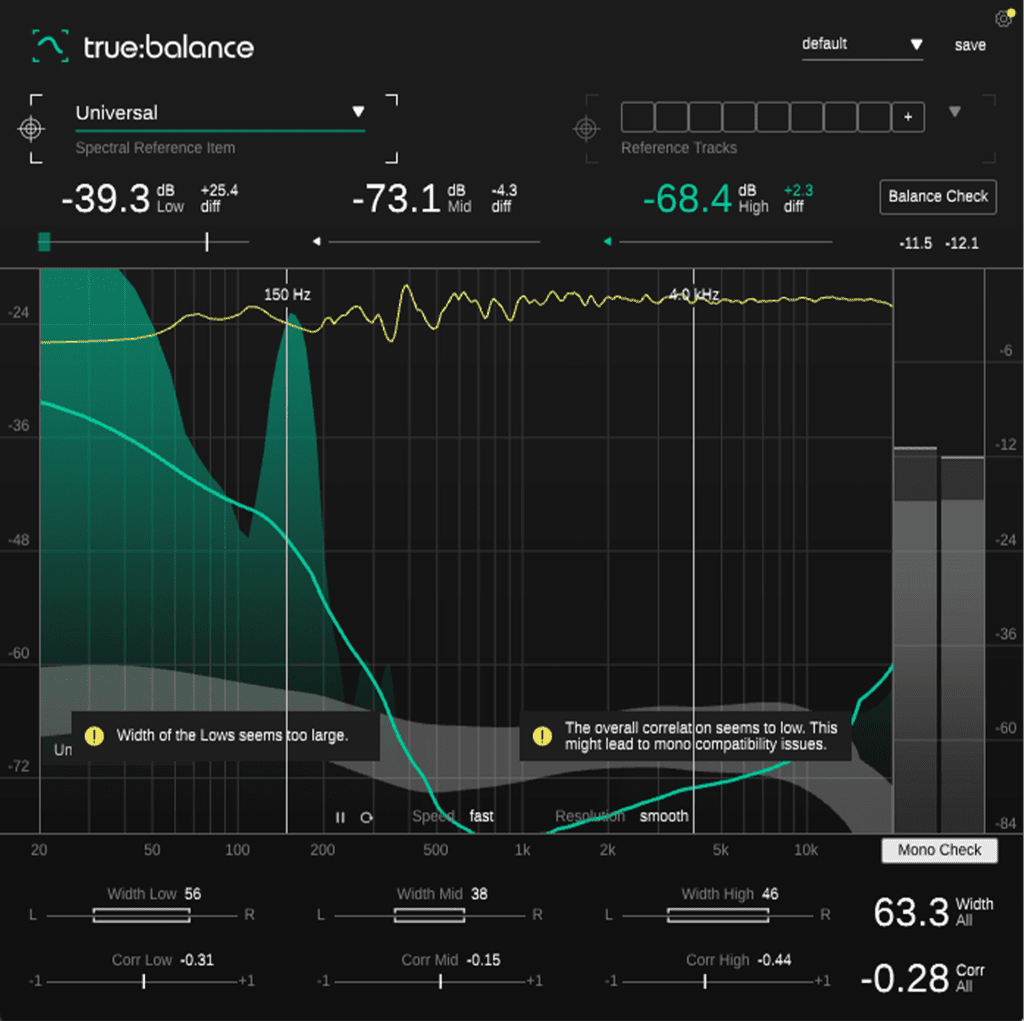
Reverb high-passing can serve as a solution when you feel it’s not right to give so much depth to the low end, but you can also ensure your reverb is tasteful and works with your particular signal. smart:reverb can keep your entire frequency spectrum under control by complementing your signal’s frequency response with an inverse set of decay times, not making resonance problems even worse.